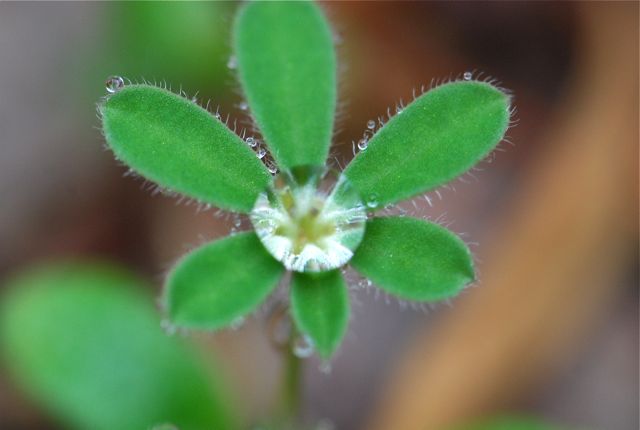This bug of the week raises more questions than it answers.

It is yellow and black. Is it a flower fly?

Is it a wasp?

A close-up shows it has four wings and a fuzzy body, which makes it a bee.
Now, what kind of bee is it?
This bug of the week raises more questions than it answers.

It is yellow and black. Is it a flower fly?

Is it a wasp?

A close-up shows it has four wings and a fuzzy body, which makes it a bee.
Now, what kind of bee is it?
The rain we’ve been having lately has popped a bunch of seedlings in our yard.

I’m always excited to see these seedlings coming up, because I know in a few short months the seedlings will grow into showy flowers called lupines.

Lupines are fun because they self-seed readily. I first planted these over 15 years ago and they have come up every year since. On the other hand, they have not spread aggressively to other areas; they stay right where I put them.
The name lupine is thought to come from the idea that lupines were like “wolves†(lupus) eating all the nutrients out of the soil, because they always seem to grow in poor soil. Now people have realized that these members of the pea family can make their own nutrients in conjunction with bacteria found in nodules on their roots. Thus lupines can grow in soils that are too poor for other plants rather than causing the soil to be poor. I’m not sure what that says about our yard. ☺

Lupines are fascinating to children because the hairs on the leaves catch raindrops and leave perfectly round droplets of water shining like gems.

Down side:Â If you are thinking of planting lupines, be aware that the foliage of some types are poisonous.
Check the color of these flowers.

Now look at the centers of these.

Are they a different species? No, lupine flowers change color when they have been pollinated. Bees are attracted by the white centers of un-pollinated flowers, but ignore the red-centered ones (bees don’t see red). Lupines “talking to†bees, cool!
The sight of the lupines coming up always reminds me of the book Miss Rumphius by Barbara Cooney. In this popular book, the main character spreads lupine seeds so that the flowers bloom everywhere. So check out a copy and you can enjoy the beauty of lupines any time.
Bug of the week this week shows what you can discover if you only look.
I started out looking at some old agave flower stalks we had saved in the back yard. (It is a cloudy day today, so some of the photographs turned out a bit dark.)

Then I noticed a hole under one of the branches.

It an entrance hole. Inside is where a female carpenter bee had made her nest. I knew the bees were long gone and I was curious so I peeked inside.

It was surprisingly clean inside, although you can see the brown marks where the nest chambers had been.

More tunnels.
The female carpenter bee that excavated these tunnels might have looked like this one from a photograph I took earlier this year:

Carpenter bees collect nectar and pollen from flowers to make into a mixture called beebread. The female bee places the beebread within the chambers within the agave stalk and then lays an egg on it. The bee grub hatches and feeds on the beebread within the protected nest.
Now the chambers are home to some other insects, however.
While I was taking photographs I noticed this caterpillar.

It looks a bit strange because it is nearly ready to pupate. I found two pupae nearby.

I am not sure what kind of moth it is.
When I was looking at the photos I noticed another insect, too. Can you spot it in front of the caterpillar?

Here is a closer look.

This tiny little insect is called a psocopteran, or more commonly a barklouse. You don’t see them very often because they are small, and spend much of the time in cracks and crevices of bark, or under rocks in the soil.
Isn’t it amazing what you can find with just a few minutes and a camera?
© 2025 Growing With Science Blog
Theme by Anders Noren — Up ↑